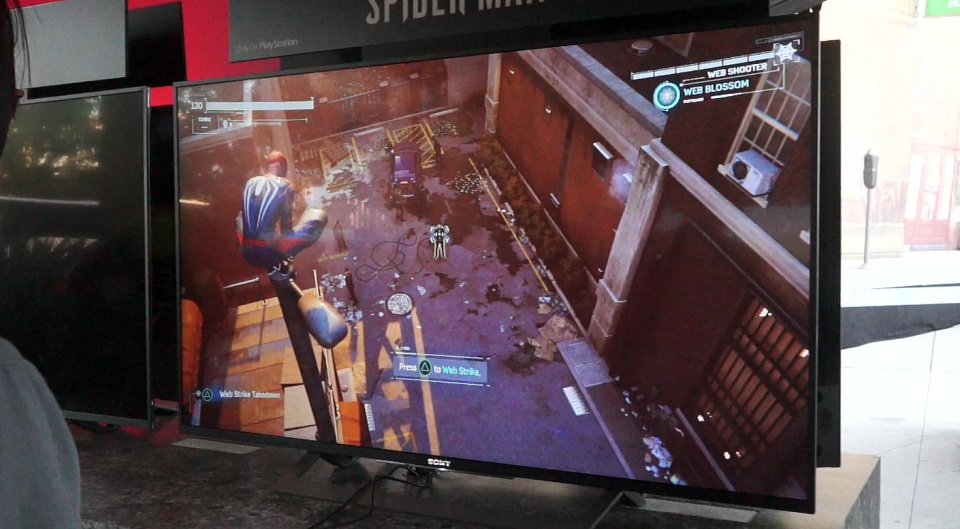

The opening sequence, which sees you battling through the headquarters of Wilson Fisk (aka Kingpin), is a spellbinding statement of intent, both a stunning extended set-piece and an impressively comprehensive tutorial. It's some of the most incredible animation work you'll ever see in a videogame, and it all contributes to the pure wish-fulfilment of Spider-Man's initial hours. There's even a specific animation for running up the side of one of New York's iconic fire-escapes, which blows my mind every time I see it. Run up to the corner of a building and Spidey will automatically fire out a web to swing himself around it, like you might swing yourself around a lamp-post to turn the corner of a street. Not only can you crawl up walls, you can sprint up and along them, and seamlessly leap from them into a swing. It's how Insomniac caters for every possible way you might want to move Spidey around the world. It's not just the way the game encourages you to maximise every swing, arcing through the air, backflipping at the zenith, then plummeting toward the ground before hitting left shift at the last possible moment. It's important to stress just how good the web-slinging is, and how much the broader game relies on it to hold your attention. It's important to stress just how good the web-slinging is. Peter Parker is arguably the perfect video-game protagonist – incredibly likeable and empathetic, powerful but not invincible, and equipped with a traversal system so good it makes you want to explore every nook and cranny of Manhattan. Spider-Man is a five-star character in a three-star world. The same can largely be said for the game itself. While generally decent, the PC port isn't quite a slam-dunk.


 0 kommentar(er)
0 kommentar(er)
